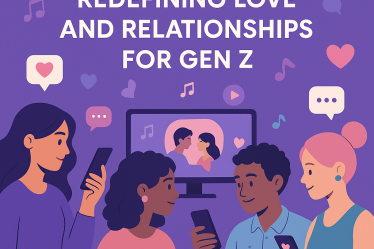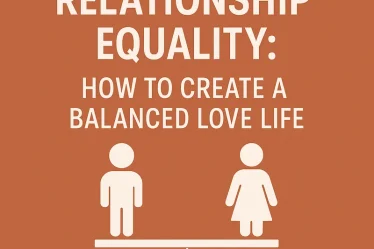
Introduction: Understanding Love Through Attachment
Why do some relationships in India feel nurturing and safe, while others are a constant emotional tug-of-war?
The answer may lie in your attachment style—a psychological framework that explains how we form bonds, handle conflict, and show love. In a culturally rich and complex society like India, attachment styles are not just influenced by childhood and personality but also by family values, traditions, and evolving relationship norms.
In this article, we’ll explore:
- The four main attachment styles
- How these styles play out in Indian relationships
- Ways to identify your own attachment pattern
- Steps to move toward healthier, secure love
What Is Attachment Style?
Attachment theory, developed by John Bowlby and expanded by Mary Ainsworth, describes how early emotional experiences with caregivers shape our relationships as adults.
There are four main attachment styles:
- Secure Attachment
- Trusting, emotionally available, good at setting boundaries.
- Anxious Attachment
- Craves closeness, fears abandonment, overly sensitive to partner’s actions.
- Avoidant Attachment
- Values independence, struggles with emotional intimacy, avoids deep connection.
- Fearful-Avoidant (Disorganized)
- Desires love but fears getting hurt; swings between closeness and distance.
These patterns develop in childhood but deeply influence our adult romantic lives.
Cultural Lens: Attachment Styles in Indian Relationships
India’s unique social fabric adds depth to how attachment styles are expressed. Unlike the West, where individualism is often emphasized, Indian relationships are heavily influenced by family, society, and cultural expectations.
Key Influences on Attachment in India:
- Collectivist culture: Emphasis on family harmony over individual needs.
- Arranged marriages: Often limit the exploration of emotional compatibility.
- Emotional suppression: Open expression of needs or affection may be discouraged.
- Parental involvement: Close-knit family ties can lead to both secure bonding and emotional dependency.
Modern twist: As urbanization, dating apps, and individual autonomy rise, younger Indians are now navigating love with a mix of traditional and modern values—often creating internal conflict between attachment needs and cultural obligations.
Identifying Your Attachment Style
Understanding your own attachment pattern is the first step to transforming your love life.
Signs of Each Attachment Style:
| Attachment Style | Traits |
|---|---|
| Secure | Trusting, consistent, communicative, emotionally balanced |
| Anxious | Clingy, jealous, seeks constant validation, fears rejection |
| Avoidant | Emotionally distant, avoids closeness, values independence |
| Fearful-Avoidant | Push-pull behavior, confused, fearful of intimacy and abandonment |
What Your Style Says About You in Love
Each attachment style shapes how we give and receive love, especially within India’s unique romantic context.
How They Manifest in Indian Relationships:
- Secure: Able to handle family pressures, open to emotional conversations, balances tradition and autonomy.
- Anxious: May become overly reliant on partner or parents for validation, often fears rejection in arranged setups.
- Avoidant: May feel suffocated by joint family systems or expectations to constantly please others.
- Fearful-Avoidant: Likely to struggle in both love marriages and arranged ones due to emotional confusion.
Compatibility Snapshot:
- Secure + Secure → Healthy, resilient relationship
- Secure + Anxious → Growth possible with patience
- Anxious + Avoidant → Most turbulent pairing
- Fearful-Avoidant + Any → Needs deep emotional work
Healing and Growth: Moving Toward Secure Attachment
The goal isn’t to “fix” yourself but to heal and grow into more secure emotional patterns—especially in relationships.
Tips for Developing a Secure Attachment:
- Therapy or counseling: Especially with professionals who understand Indian family dynamics
- Emotional journaling: Track triggers and self-soothe patterns
- Mindful communication: Practice honest but respectful expression of feelings
- Boundaries: Learn to say no, even to family, with empathy
- Healthy partnerships: Choose partners who value emotional safety, not just tradition or status
Real Stories: How Indians Are Using Attachment Theory
Anjali, 28, Mumbai (Anxious to Secure):
“Understanding my anxious attachment helped me stop blaming my partner. Now, I focus on self-soothing and don’t panic when he needs space.”
Raghav, 35, Delhi (Avoidant to Secure):
“I always felt smothered in relationships. After reading about attachment theory, I realized I was emotionally unavailable. Therapy helped me open up without fear.”
Priya & Kunal, Bengaluru (Mixed styles):
“As a secure-avoidant couple, we struggled at first. But understanding our styles helped us find a middle ground.”
Conclusion: Love Starts With Self-Awareness
In India, where relationships are often a delicate balance of personal emotions and collective expectations, understanding your attachment style can be a game-changer.
Whether you’re navigating love marriages, arranged setups, or just starting to date, emotional awareness gives you the tools to build deeper, healthier bonds.
Unlocking love starts with unlocking yourself.
FAQs
Q1. Can my attachment style change over time?
Yes. With self-awareness, emotional work, and supportive relationships, people can shift toward a more secure attachment style.
Q2. How does arranged marriage affect attachment styles in India?
Arranged marriages can amplify anxious or avoidant behaviors due to lack of emotional familiarity. However, they can also foster security if emotional trust builds over time.
Q3. Is therapy necessary to change my attachment style?
Not always. While therapy helps, self-help tools like journaling, mindful communication, and secure partner support can also promote change.
Q4. How do I know if I’m in a relationship with someone with a different attachment style?
Watch for patterns—are they overly clingy, distant, or emotionally reactive? Awareness of your and your partner’s behavior is key.
Q5. What’s the best attachment style for a happy relationship?
Secure attachment offers the most emotional safety and stability. The good news? It can be cultivated, even if you didn’t start there.



